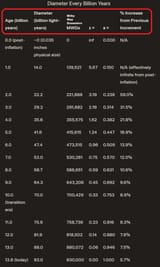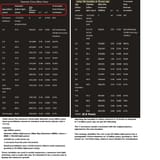a(t) = 1/(1+z)
a(t) = 1/(1+z)
Key Physics:
Scale factor relation: 1 + z = 1/a, so a(t) = 1/(1+z)
Scale factor is set to 1.0 at present time, smaller values in the past
Size at any time = scale factor × current size
1 MWD = 100,000 light-years
Calculations based on Planck 2018 cosmological parameters via astropy.cosmology (current universe age ≈13.79 billion years; observable diameter ≈93 billion light-years)
Post-inflation size corrected based on standard inflationary models (assuming ≈60 e-folds of expansion), yielding a physical diameter for the observable universe of ≈0.88 mm (≈0.035 inches), close to the size of a grain of sand.
Does this sound correct?
https://astronuclphysics.info/Gravitace5-5.htm
https://physics.stackexchange.com/questions/32917/size-of-universe-after-inflation
physicsforums.com/threads/big-bang-size-of-the-universe-at-different-epochs.1010248/
Key Physics:
Scale factor relation: 1 + z = 1/a, so a(t) = 1/(1+z)
Scale factor is set to 1.0 at present time, smaller values in the past
Size at any time = scale factor × current size
1 MWD = 100,000 light-years
Calculations based on Planck 2018 cosmological parameters via astropy.cosmology (current universe age ≈13.79 billion years; observable diameter ≈93 billion light-years)
Post-inflation size corrected based on standard inflationary models (assuming ≈60 e-folds of expansion), yielding a physical diameter for the observable universe of ≈0.88 mm (≈0.035 inches), close to the size of a grain of sand.
Does this sound correct?
https://astronuclphysics.info/Gravitace5-5.htm
https://physics.stackexchange.com/questions/32917/size-of-universe-after-inflation
physicsforums.com/threads/big-bang-size-of-the-universe-at-different-epochs.1010248/



